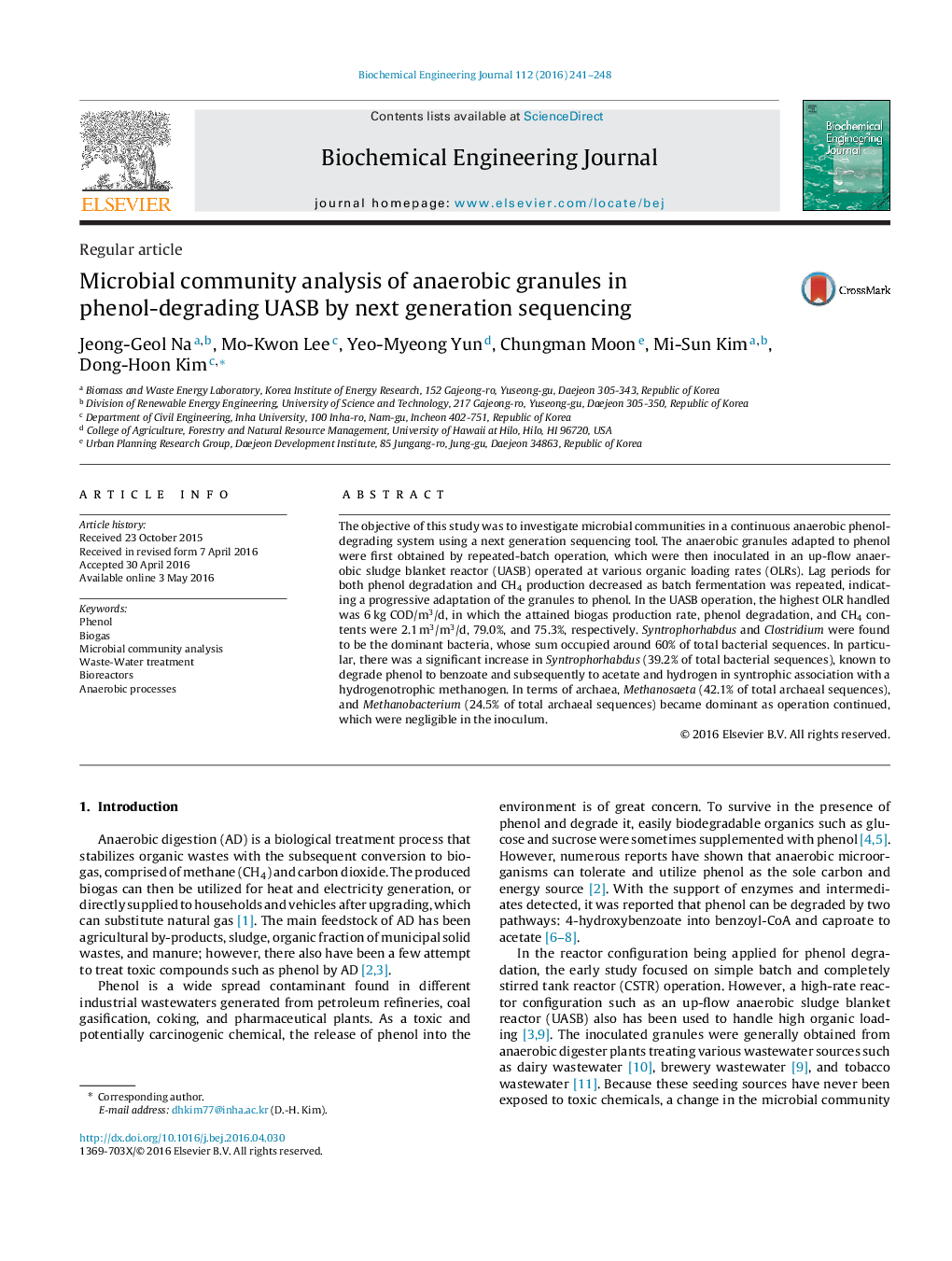| کد مقاله | کد نشریه | سال انتشار | مقاله انگلیسی | نسخه تمام متن |
|---|---|---|---|---|
| 2729 | 127 | 2016 | 8 صفحه PDF | دانلود رایگان |

• Microbial community analysis of phenol-degrading consortia using NGS.
• Progressive adaptation of anaerobic granules during repeated-batch operation.
• The highest OLR in UASB operation was 6 kg COD/m3/d.
• Syntrophorhabdus became dominant, accounting for 39.2% of bacterial sequences.
• Methanosaeta became dominant, accounting for 42.1% of archaeal sequences.
The objective of this study was to investigate microbial communities in a continuous anaerobic phenol-degrading system using a next generation sequencing tool. The anaerobic granules adapted to phenol were first obtained by repeated-batch operation, which were then inoculated in an up-flow anaerobic sludge blanket reactor (UASB) operated at various organic loading rates (OLRs). Lag periods for both phenol degradation and CH4 production decreased as batch fermentation was repeated, indicating a progressive adaptation of the granules to phenol. In the UASB operation, the highest OLR handled was 6 kg COD/m3/d, in which the attained biogas production rate, phenol degradation, and CH4 contents were 2.1 m3/m3/d, 79.0%, and 75.3%, respectively. Syntrophorhabdus and Clostridium were found to be the dominant bacteria, whose sum occupied around 60% of total bacterial sequences. In particular, there was a significant increase in Syntrophorhabdus (39.2% of total bacterial sequences), known to degrade phenol to benzoate and subsequently to acetate and hydrogen in syntrophic association with a hydrogenotrophic methanogen. In terms of archaea, Methanosaeta (42.1% of total archaeal sequences), and Methanobacterium (24.5% of total archaeal sequences) became dominant as operation continued, which were negligible in the inoculum.
Figure optionsDownload as PowerPoint slide
Journal: Biochemical Engineering Journal - Volume 112, 15 August 2016, Pages 241–248